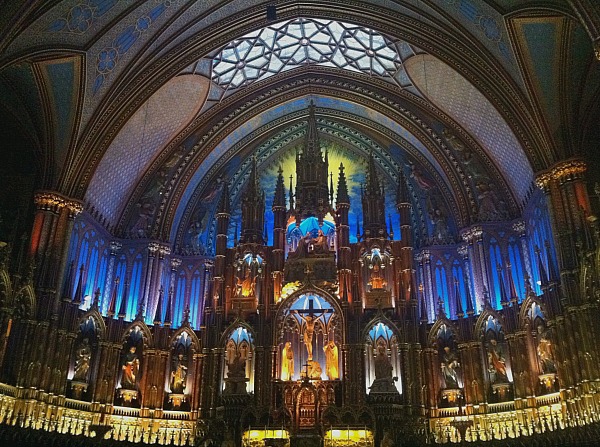
The original church, which stood directly in Rue Notre-Dame, was demolished with just an outline of stones left to mark where it once stood on the edge of Place D’Armes, the old plaza where military events were once staged.

While he is the only person officially buried in the church’s crypt, the tour guide assured us that many more bodies were entombed under the stone since the basilica was built just behind the original stone church on top of the original cemetery (the current cemetery is now on Mont Royal). On his deathbed he converted to Catholicism so he could be buried under the church. O’Donnell died of pneumonia in 1830, shortly after the main construction of the church was finished. “Within two years he blew the budget and so the church was finished without the towers or internal decor.” “Including the budget, quite unfortunately,” the tour guide noted. O’Donnell had just finished the Christ Church in Manhattan and First Presbyterian in Rochester and was put in charge of everything related to the Montréal project. Despite having several talented architects in Montréal, none of these architects had any experience building a church of the planned scale. The tour guide had spent some time describing the architect for the new church, James O’Donnell, an Irish Protestant from New York.


In 1823 construction for the new church was approved. Construction of the stone church finished in 1683, and that church fed the spiritual needs of the neighborhood well into the 1800s, despite overcrowding to the point that parishioners frequently had to listen to Mass from the parvis, or enclosed portico of the church. The tour guide had explained this already on the tour, shortly after describing the history of the church from its humble beginnings as a Jesuit-run wooden chapel in 1642, until the Sulpicians (whom the guide explained were similar to the Dominicans) took over in 1657 and built a chapel adjacent to the Hôtel-Dieu, the first hospital of Montréal (then just a town called Fort Ville-Marie). “It is a church designated by the Vatican to have architectural, artistic, and historical value.”


 0 kommentar(er)
0 kommentar(er)
